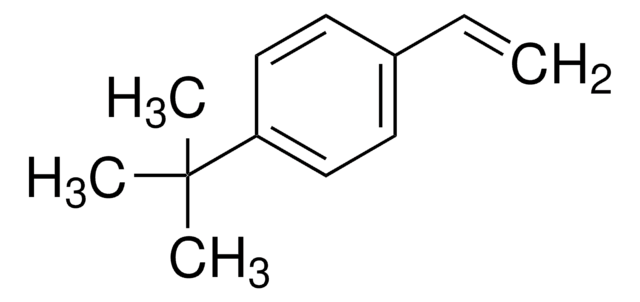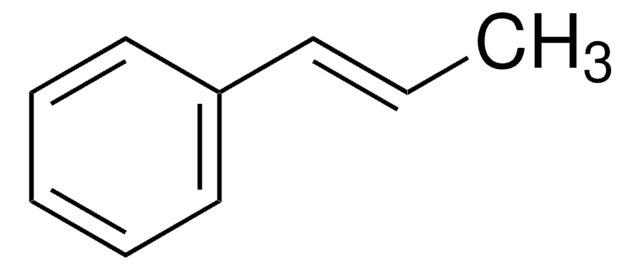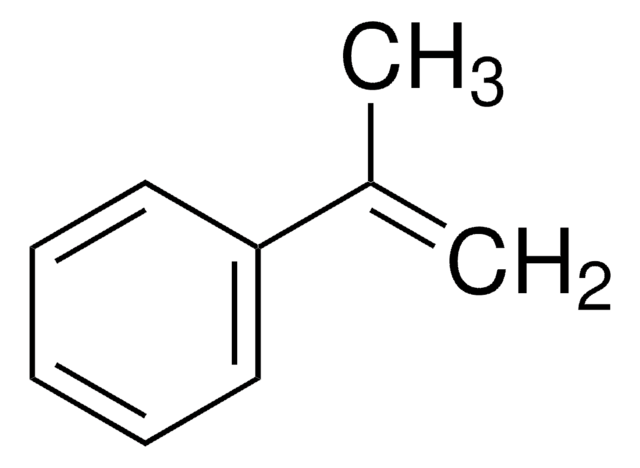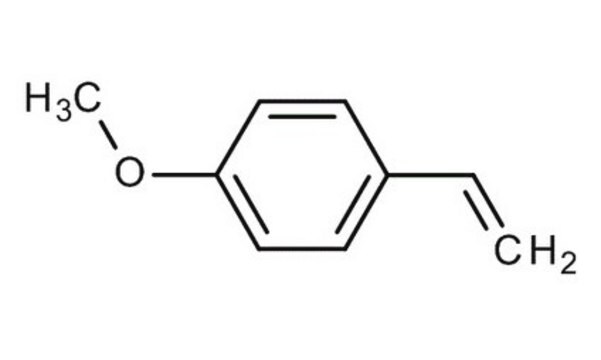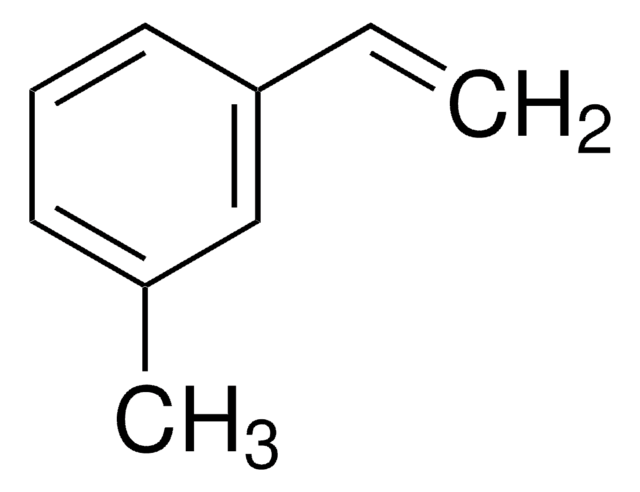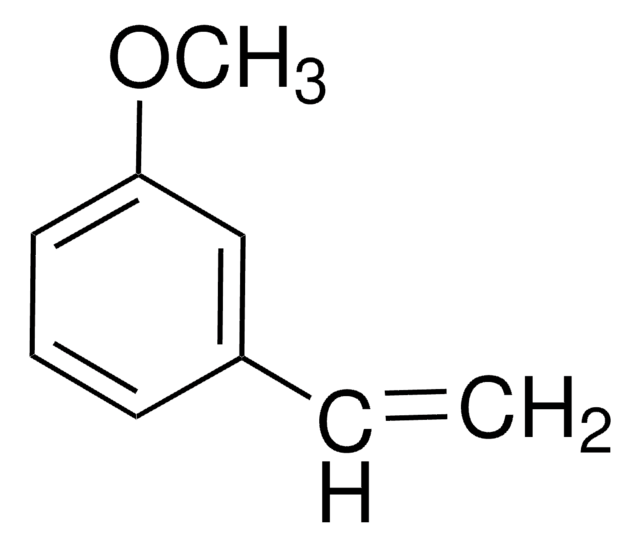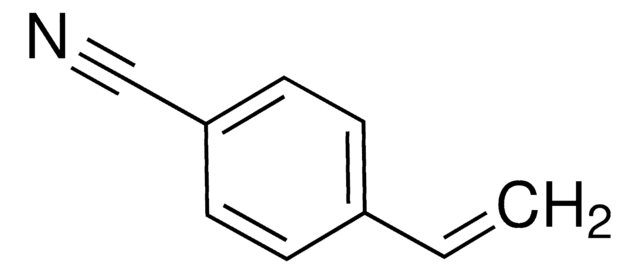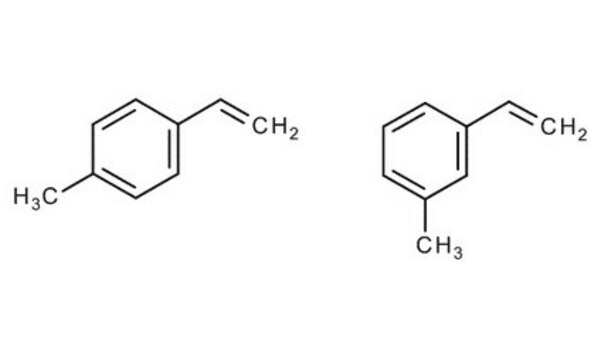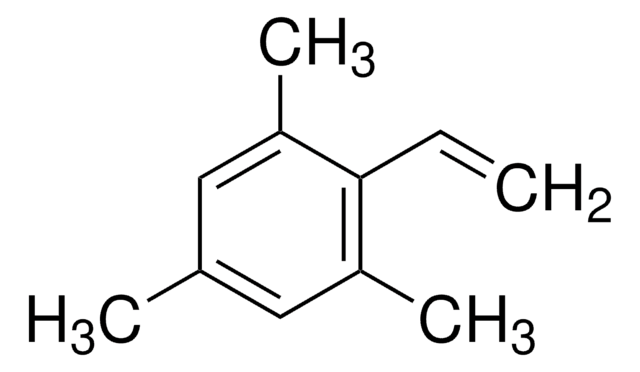Wichtige Dokumente
M80806
4-Methylstyrol
96%, contains 3,5-di-tert-butylcatechol as inhibitor
Synonym(e):
4-Vinyl-toluol
About This Item
Empfohlene Produkte
Dampfdruck
<1 mmHg ( 20 °C)
Qualitätsniveau
Assay
96%
Form
liquid
Selbstzündungstemp.
959 °F
Enthält
3,5-di-tert-butylcatechol as inhibitor
Expl.-Gr.
5.3 %
Brechungsindex
n20/D 1.542 (lit.)
bp
170-175 °C (lit.)
Dichte
0.897 g/mL at 25 °C (lit.)
Lagertemp.
2-8°C
SMILES String
Cc1ccc(C=C)cc1
InChI
1S/C9H10/c1-3-9-6-4-8(2)5-7-9/h3-7H,1H2,2H3
InChIKey
JLBJTVDPSNHSKJ-UHFFFAOYSA-N
Suchen Sie nach ähnlichen Produkten? Aufrufen Leitfaden zum Produktvergleich
Allgemeine Beschreibung
Anwendung
Signalwort
Danger
H-Sätze
Gefahreneinstufungen
Aquatic Chronic 2 - Asp. Tox. 1 - Flam. Liq. 3
Lagerklassenschlüssel
3 - Flammable liquids
WGK
WGK 3
Flammpunkt (°F)
113.0 °F
Flammpunkt (°C)
45 °C
Persönliche Schutzausrüstung
Eyeshields, Faceshields, Gloves, type ABEK (EN14387) respirator filter
Hier finden Sie alle aktuellen Versionen:
Besitzen Sie dieses Produkt bereits?
In der Dokumentenbibliothek finden Sie die Dokumentation zu den Produkten, die Sie kürzlich erworben haben.
Kunden haben sich ebenfalls angesehen
Artikel
The Heck reaction is the palladium catalyzed cross-coupling reaction between alkenes and aryl or vinyl halides (or triflates) to afford substituted alkenes.
Unser Team von Wissenschaftlern verfügt über Erfahrung in allen Forschungsbereichen einschließlich Life Science, Materialwissenschaften, chemischer Synthese, Chromatographie, Analytik und vielen mehr..
Setzen Sie sich mit dem technischen Dienst in Verbindung.